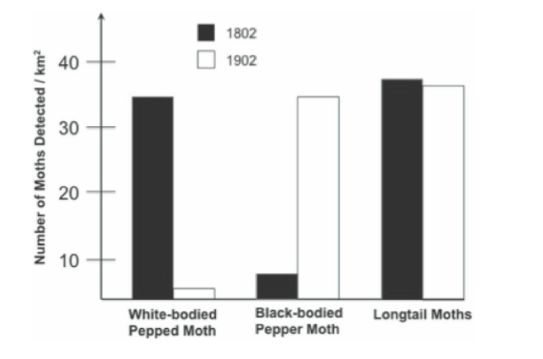- 翰林提供学术活动、国际课程、科研项目一站式留学背景提升服务!
- 400 888 0080
【每日一题】AP 生物 20180126
AP Biology精编
During the industrial revolution, a major change was observed in many insect species due to the mass production and deposition of ash and soot around cities and factories. One of the most famous instances was within the spotted moth populations.
An ecological survey was performed where the number of spotted moths and longtail moths were counted in 8 different urban settings over a square kilometer in 1802. A repeat experiment was performed 100 years later in 1902. The results of the experiment are shown below.

How would the results of this study have been different, if factories produced white or light gray ash and soot rather than black?
(A) There would be no change to the results of the experiment.
(B) There would been added selection pressure for more white-bodied spotted moths and against black-bodied spotted moths.
(C) There would been added selection pressure for more black-bodied spotted moths and against white-bodied spotted moths.
(D) There would have been an increase in the frequency of both black-bodied and white-bodied spotted moths.
题目解析
题目问如果工厂的烟尘是白色的、浅色的,而非黑色的,那么对实验结果会有何影响。
如果烟尘是白色的,那么白色的蛾子会更容易生存,自然选择会使得蛾子种群中白色的品种更容易生存和繁衍后代,
因此选(B) There would been added selection pressure for more white-bodied spotted moths and against black-bodied spotted moths。
题目选自Cracking the AP Biology 2015 Edition

早鸟钜惠!翰林2025暑期班课上线

最新发布
© 2025. All Rights Reserved. 沪ICP备2023009024号-1








